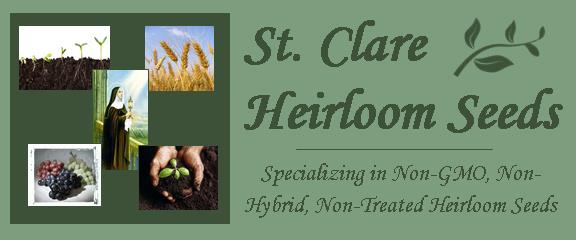Watering
In most areas the Heirloom / Open Pollinated vegetable garden requires a moisture supply equivalent to about an inch of rain a week during the growing season for best vegetable garden plant growth. It requires roughly that amount of watering a week to maintain good production if the moisture stored in the soil becomes depleted and no rain falls over periods of weeks. An inch of rain is equivalent to about 28,000 gallons on an acre, or 900 gallons on a 30- by 50-foot garden.
It is much better to give the Heirloom / Open Pollinated Vegetable garden a good soaking about once a week than to water it sparingly more often. Light sprinklings at frequent intervals do little, if any, good. The best way to apply water, when the soil and slope are suitable, is to run it the length of furrows between the rows until the soil is well soaked. If the soil is very sandy or the surface too irregular for the furrow method, sprinklers or porous irrigating hose must be used.
Heirloom / Open Pollinated Vegetable Garden
Weeds rob cultivated Heirloom / Open Pollinated vegetable garden plants of water, nutrients, and light. Some weeds harbor diseases, insects, and nematodes that reinfest Heirloom / Open Pollinated Vegetable Garden crops in succeeding years.
As soon as the soil can be properly worked after each rain or irrigation, it should be thoroughly hoed or cultivated to kill weeds that have sprouted and to leave the surface in a loose, friable condition to absorb later rainfall. The primary value of hoeing or cultivating is weed control. This cultivation should be shallow so as to avoid injuring the vegetable garden plant roots that lie near the surface. Although it is desirable to keep the surface soil loose, there is little to be gained by hoeing or cultivating oftener than necessary to keep weeds out of the vegetable garden.
In small Heirloom / Open Pollinated vegetable gardens, weeds can be controlled with black polyethylene mulch supplemented by hand weeding such as pulling, hoeing, and wheel hoeing. Mulching vegetable garden crops with organic material also is a common practice in small vegetable gardens.
The best organic mulches are partially decomposed hay, straw, or grass clippings. The mulch should be applied 4 to 6 inches deep when the vegetable garden plants are about 6 inches tall. Heirloom / Open Pollinated Cabbage, tomato, and other transplants usually are tall enough soon after they are set in the vegetable garden. Before applying mulch, hoe out all small weeds. Not only does mulch control weeds, it also conserves moisture, keeps the soil from packing, and increases the humus necessary for vigorous plant growth.
Heirloom / Open Pollinated Vegetable Garden
Heirloom / Open Pollinated vegetable Garden crops are subject to attack by a number of diseases and insects. Preventive measures are best, but if an attack occurs and the gardener is not familiar with the nematode, insect or disease and the proper treatment to protect his crop, he is advised to consult the county Extension agent.
Among the most important disease-control measures are the use of disease-free seeds and plants, and the use of disease-resistant Heirloom / Open Pollinated varieties. Great progress has been made within recent years in the development of Heirloom / Open Pollinated varieties that are resistant to certain diseases, insects and nematodes.

